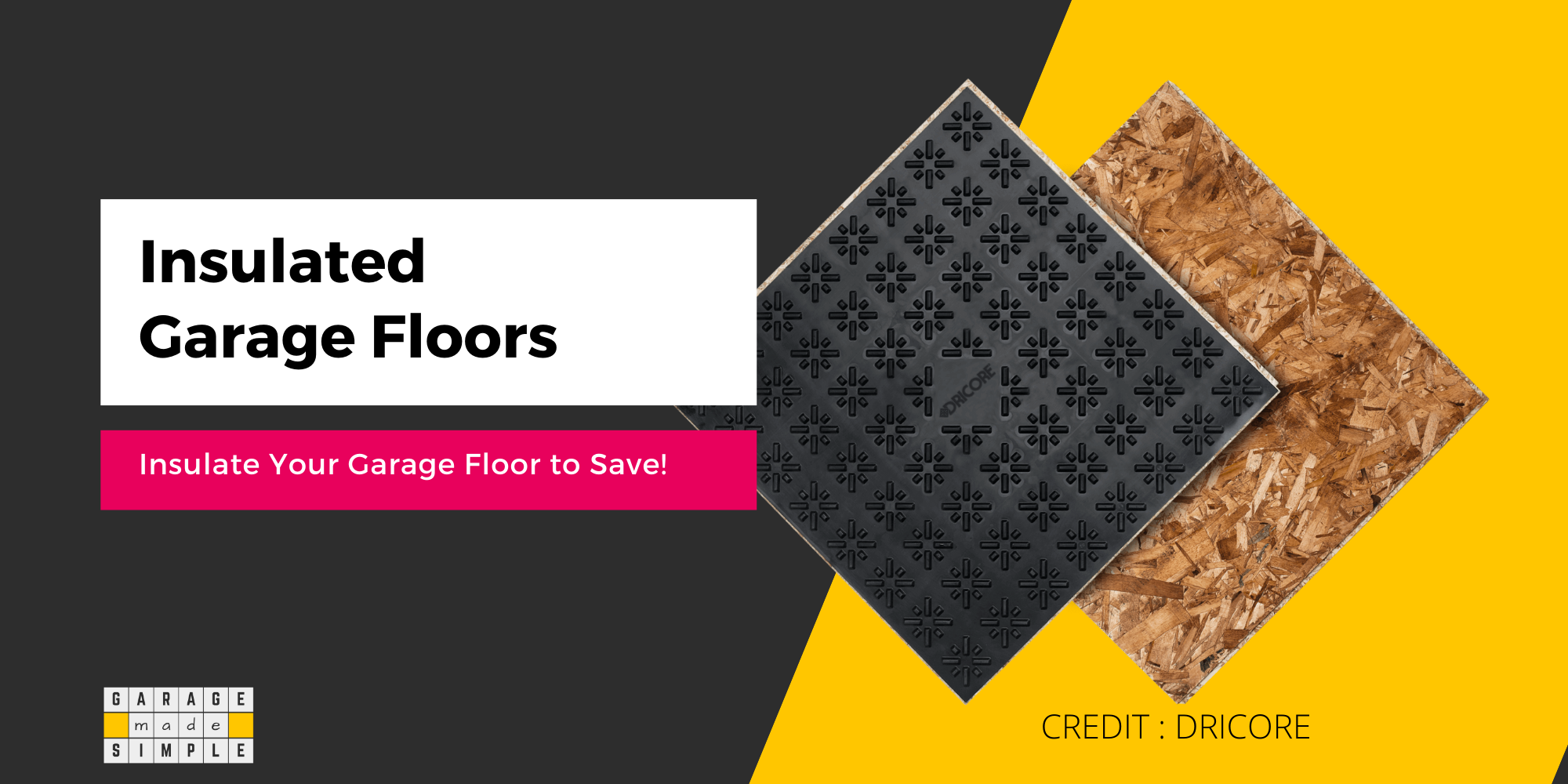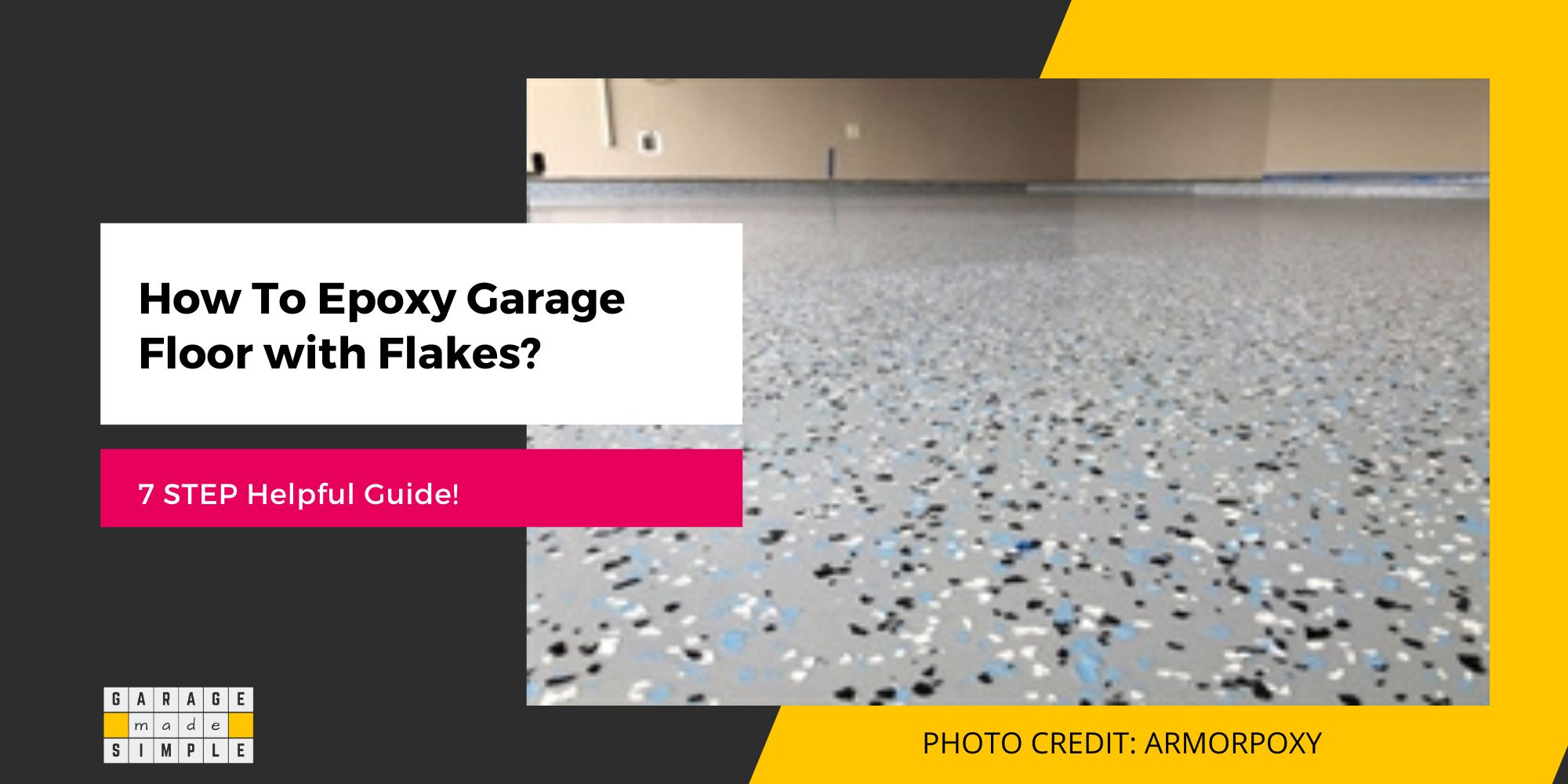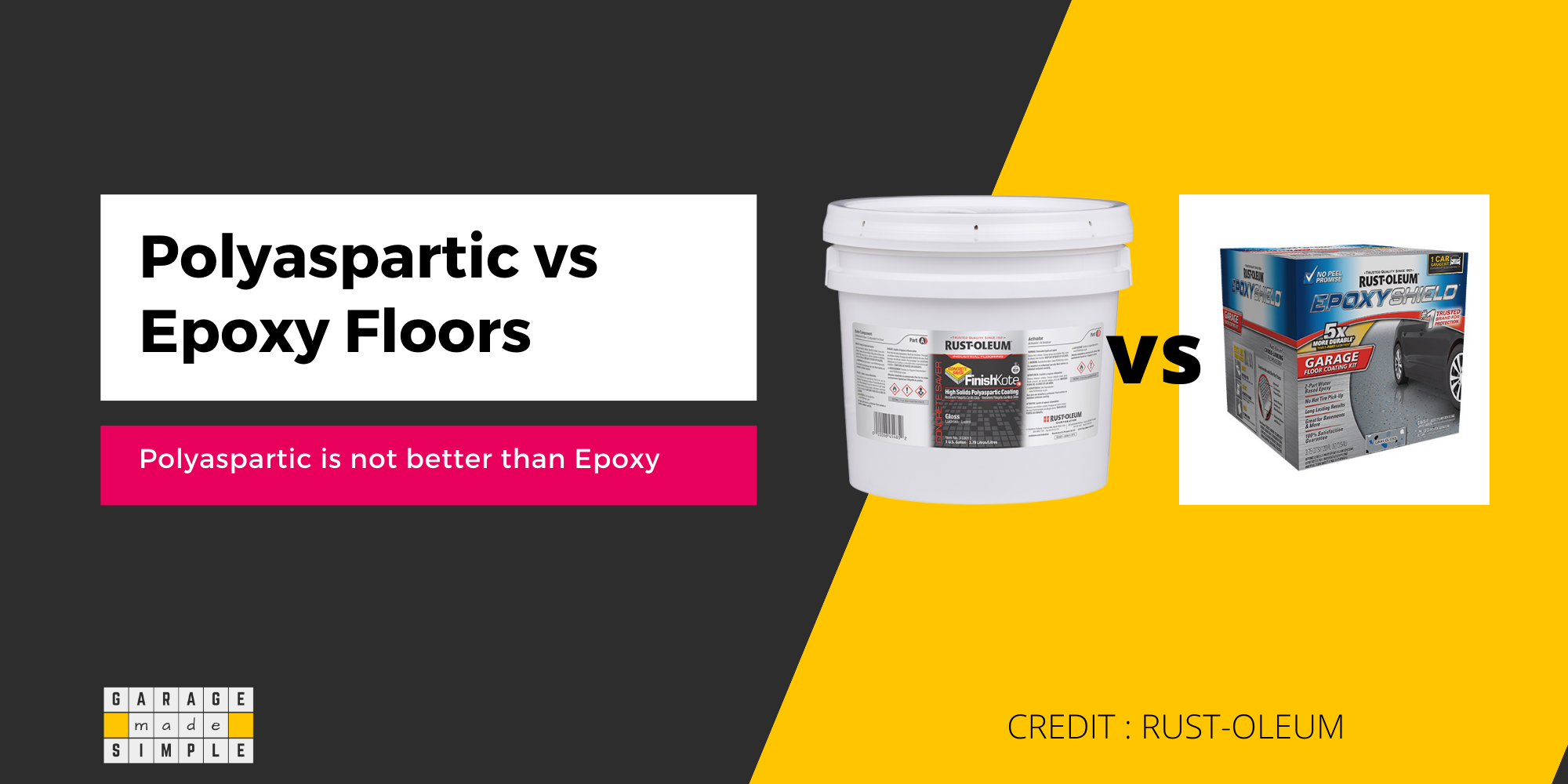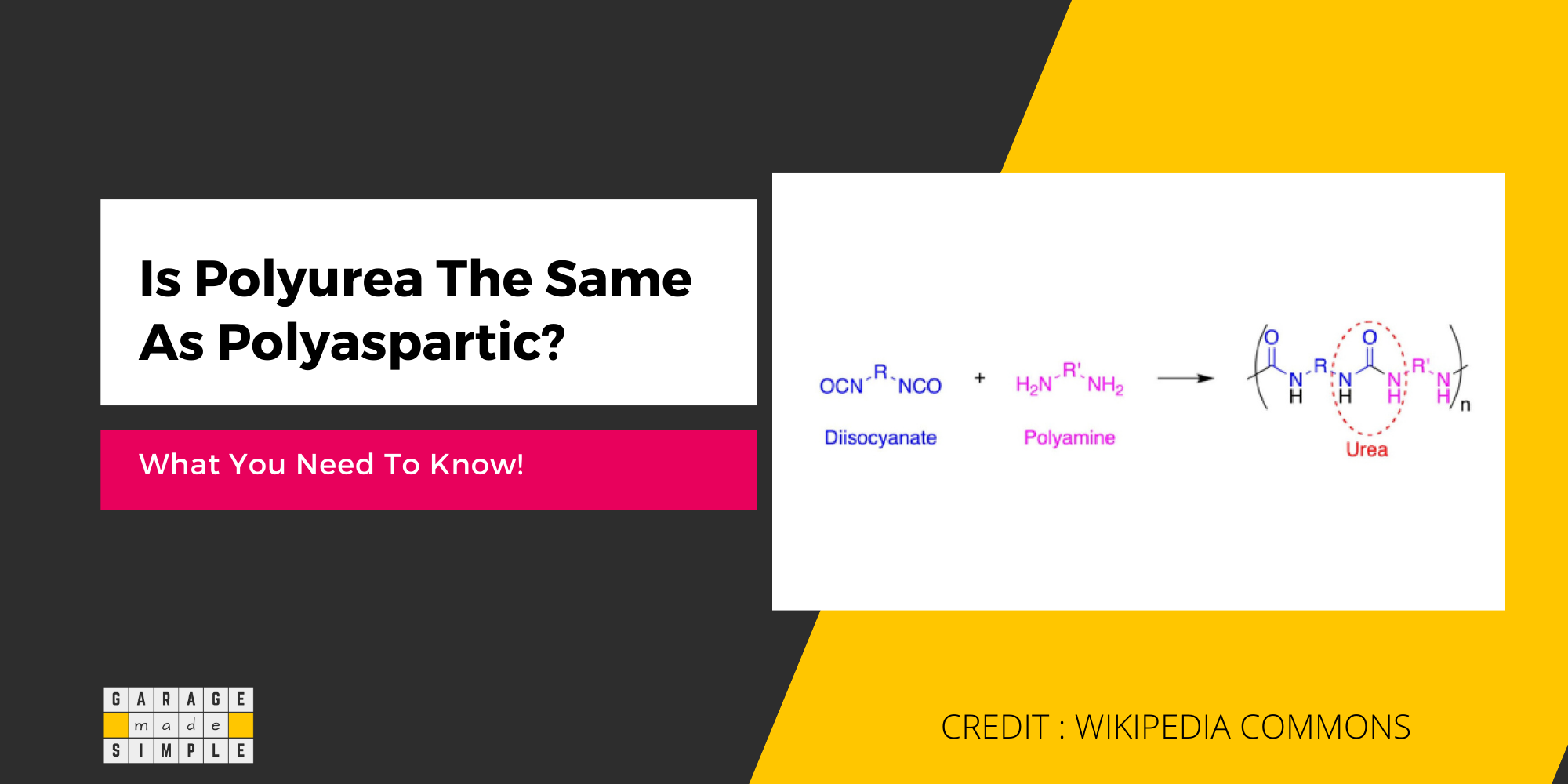How to Remove Epoxy from the Garage Floor? (Best of 7 Proven Ways!)
As an Amazon Associate, I earn from qualifying purchases.
How to Remove Epoxy from the Garage Floor?
Epoxy is preferred for coating garage floors because it is chemical resistant, hard wearing and durable. However, the application does not alway go as per plan. Mess ups happen! You may end up with an epoxy garage floor that is peeling, fading or of the wrong color. So how to remove epoxy from your garage floor?
You can remove epoxy from your garage floor by:
- Chemical Softening using Methylene Chloride, Caustic stripper or Acetone
- Heat Softening using a heat gun
- Mechanical Abrasion using floor grinder, steel shot blasting or sandblasting.
These are the 7 proven ways of removing epoxy from a concrete surface. But which is the best one for your garage and for your requirements?
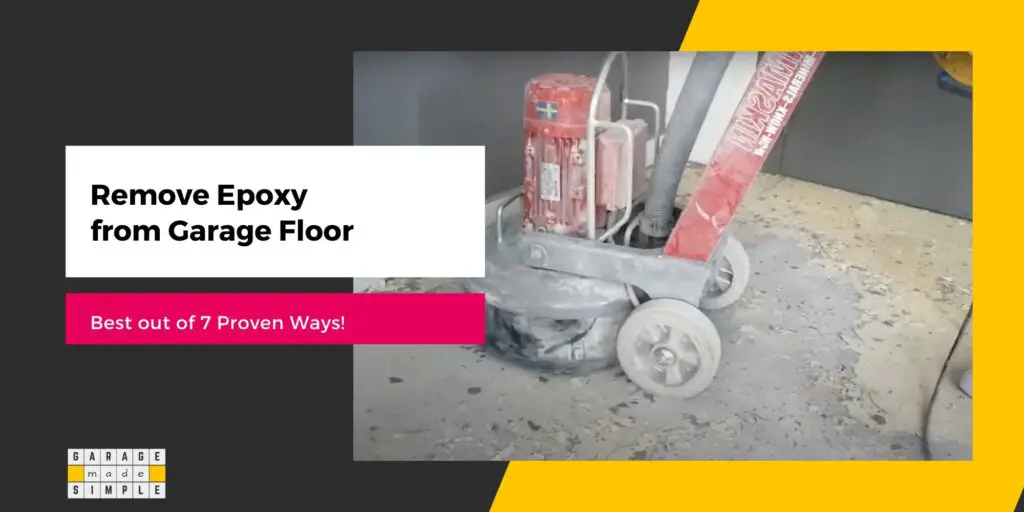
In this post I explain each of the 7 ways and discuss the pros & cons of each. You will be able to conclude the best method that will work for you.
Chemical Softeners
Epoxy coatings are pretty resistant to most chemicals. The regular paint stripper that will work on acrylic on alkyd paint will not be effective on an Epoxy coating.
However there are three solvents that will soften up to the epoxy coating so that you can scrape it off the concrete floor. They are as under:
Methylene Chloride (aka Dichloromethane)
Methylene Chloride, also known as Dichloromethane, will soften up the epoxy coating. This chemical is available at big box stores such as Home Depot or Walmart. It is also available on Amazon.
Methylene Chloride is very effective, especially in small areas. However, extreme caution is required when using it. It comes with several health risks.
Methylene Chloride is a carcinogen and can also cause respiratory high and skin irritations.
Methylene chloride (CH2Cl2) is a colorless liquid that can harm the eyes, skin, liver, and heart. Exposure can cause drowsiness, dizziness, numbness and tingling limbs, and nausea. It may cause cancer. Severe exposure can cause loss of consciousness and death.
CDC
You can use this chemical in small quantities, provided you are conscious of the risks and use all the personal protective equipment (PPE) listed below:
- Neoprene or Butyl Gloves
- Rubber boots, full length trousers & full sleeve shirts
- Splash Goggles
- Respirator
Make sure that the area is well ventilated by using a fan.

I do not recommend using Methylene Chloride (aka Dichloromethane) to remove epoxy from the entire garage floor. The chemical should only be used for small areas, if at all.
Caustic Stripper
Caustic Strippers break down the chemicals in the epoxy resin. They are not as effective as Dichloromethane as they take longer to soften up the epoxy.
On the flip side, Caustic Strippers are safer as they have fewer health risks. Moreover, they are your best option if you have several layers of epoxy on the garage floor. This possibility exists if you have used an epoxy primer, two coats of epoxy finish and a clear epoxy topcoat.
Use Caustic Strippers if your garage floor has multiple coats of epoxy. They are slow but safer.
Acetone
Acetone will soften and help in detaching the epoxy coating from the concrete floor. Acetone is very useful if you wish to remove epoxy from small metal parts. When it comes to the garage floor, you can use it only in very small sections.
Acetone evaporates very fast. Spreading it across the entire garage floor would be pointless. The Acetone would evaporate before it has time to work on the epoxy coating.
Another disadvantage of using Acetone is that it is highly flammable. You should not use it without ensuring there is no source of open flames in the vicinity. The area must be well ventilated using a fan.
To remove epoxy from the garage floor, dip a clean rag in acetone and press it down on the epoxy floor for several minutes. Once the epoxy softens, you use a plastic scraper to scrape it off.
Acetone can be used to remove small spots of epoxy garage floor, but it is not very practical to use it for an entire garage floor.
Heat Softening
Epoxy begins to soften at around 90 degrees Celsius (194 degrees Fahrenheit). It will actually burn to ash at 400 degrees Celsius (752 degrees Fahrenheit).
Heat Gun
You should set the heat gun at 90 degrees Celsius (194 degrees Fahrenheit) and direct it perpendicularly on to the epoxy garage floor. Scrape off the epoxy once it begins to soften.
Make sure to use personal protective equipment (PPE) such as a respirator, safety goggles and inflammable gloves. Also wear rubber boots, full length trousers & full sleeve shirts.
The heat gun method to remove epoxy from a garage floor is alright for small areas but quite a tedious process for the complete garage floor.
Mechanical Abrasion
Floor Grinder
A Floor Grinder can be used to remove the epoxy from the garage floor with relative ease. It is usually possible to rent a floor grinder from home improvement stores like Home Depot or Lowe’s.
There are 3 types of floor grinders, categorized by size:
- Hand Held
- Walk Behind
- Ride On
A hand held or walk behind will be the right size for a garage or even a RV garage. You will need a bladed diamond grinder attachment or a diamond cup wheel that can remove the epoxy.
An important factor to consider is whether to use dry grinding or wet grinding. Dry grinding will obviously create a lot of dust, but wet grinding will create a soupy mess.
You will anyway need to clean up the garage floor with a shop vac. Wet grinding will at least save you from the health hazards of epoxy dust in the air.
Steel Shot-blast
A Steel Shot-blasting machine works pretty much like a machine gun. Tiny steel balls function as bullets. The steel shots impact the epoxy floor at high speeds driven by a centrifugal blast wheel.
Shot blasting will remove peeling epoxy paint from the garage floor by chipping it away with each impact. It can even help prep the surface if you are planning to repaint it.
The SB-6 Shot Blaster is your lightweight, portable solution for small to medium size jobs. When connected to the A-101 Pulse Vac, you achieve a virtually dust-free shot blast system.
It is ideal for removing epoxy or other coatings as well as for prepping the garage concrete floor for paint or coating application.
Sand-blasting
Sand-blasting has both similarities and differences with shot-blasting. The conceptual principle is the same in both cases. Hard particles or aggregates are shot at the epoxy film or the concrete or metal surface as the case may be.
The substrate is abraded by the impact. Both are used to remove unwanted material such as old coatings, rust or other contaminants. The main difference between the two is as under:
| Shot-blasting | Sand-blasting |
| The medium is usually steel balls. The balls can also be made from other hard materials such as aluminum oxide or carbon grit. | The medium is, as the name suggests, silica sand. Gentler abrasives such as organic media or glass can also be used. |
| In shot-blasting, the balls are loaded into a centrifugal wheel, and shot at the surface at high speed. This is done in a closed chamber within a piece of specialized machinery. | In sand-blasting, the sand is fired at the surface at high speed, using high pressure water or compressed air. The speed, however, is lower than that of shot-blasting. In some applications, such as shipbuilding, the sand may not be contained. |
If you can rent sand-blasting equipment with a vacuum attachment then it could be cheaper than renting similar shot-blasting equipment.
Sand-blasting will be somewhat slower and less efficient than shot-blasting.
Conclusion
In conclusion, I would say that shot-blasting with a vacuum attachment will be the cleanest and fastest way to remove epoxy from your garage floor before recoating it. If you are not able to rent a shot-blasting machine then rent a floor grinder. It will do the job but will create a bit of a mess!
Thank you very much for reading the post. I do hope you found it informative and useful.

